We previously wrote an article about the feasibility of an Australian home going off-grid with a 3kW solar system – quite a small system size for such an ambitious endeavour. In this article, we’ll look at the case for developing off grid power systems with a 10kW solar system – the unofficial upper limit for residential solar system size in Australia. Can an Australian home disconnect from the grid with a 10kW solar system and batteries?
(This article was originally published in March 2016. We have updated it for clarity and simplicity.)
Compare quotes from pre-vetted installers in your area
Is energy self-sufficiency possible with a 10kW solar system and batteries?
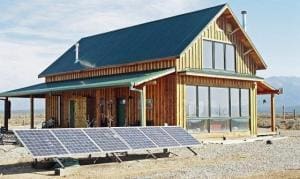 We’ll assume that you live in a home with a 10kW solar system and no solar feed-in tariff incentive, meaning that you are better off ‘self-consuming‘ your solar energy than sending it into the grid. Whether or a not a home could sever ties with the grid with a system of this size depends on a number of things, including:
We’ll assume that you live in a home with a 10kW solar system and no solar feed-in tariff incentive, meaning that you are better off ‘self-consuming‘ your solar energy than sending it into the grid. Whether or a not a home could sever ties with the grid with a system of this size depends on a number of things, including:
- Location: Some locations are just sunnier than others. Darwin is the sunniest of all of Australia’s capital cities, while Hobart is the least sunny.
- Roof orientation and tilt: In Australia, north-facing rooftops whose tilt is roughly at the same angle as the location’s latitude produce the most power. East and west-facing arrays tend to produce a bit less, and south-facing arrays least of all. (Read more.)
- Daily energy consumption: If your daily energy needs are minimal (e.g. under 10 kilowatt-hours – kWh – per day), it will be easier for you to install a solar+storage system that can make you self-sufficient.
- Daytime energy consumption: If you use most of your electricity while the sun shines, you won’t need as large a battery bank because you’ll likely consume the solar energy directly, as it is being produced. (Read more.)
- Total solar energy produced: Remember that if you want to go off-grid, you’ll need to be able to store enough energy to get you through 3-4 days of rainy weather – this is called ‘energy autonomy’. If your solar PV system is not large enough to charge your battery bank, then you can’t go off grid without a generator, which could increase the overall cost of your system significantly (mainly because of the fuel expenditures).
Please note that the figures below are estimates only and should not be taken as final-word advice. Please speak with a solar/storage installer before choosing your final system size and products.
Going off-grid with 10kW of solar and batteries (Sydney example)
Using SunWiz’s PVSell software, we took a look at the case for going off-grid with a 10kW solar system in Sydney below. The primary thing that we’re looking at is the ‘one day storm blackout protection’, which is a good indication of how much energy independence – and therefore off-grid readiness – that a solar & storage system can deliver. It’s also useful to look at the ‘energy self-generation’ figure, which shows the percentage of energy the 10kW solar system would produce relative to the amount of energy the home consumes.
Example: Going off-grid in Sydney
- Assumes:
- Unshaded, north-facing 10kW solar system
- 10kWh daily electricity consumption (assumes heating & cooling are done using non-electric means)
- Mostly daytime usage
30kWh of usable battery storage capacity: ~3 days of energy independence (‘storm blackout protection’ in the graph below)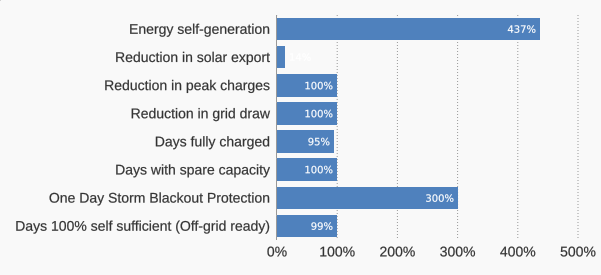
40kWh of battery storage: ~4 days of energy independence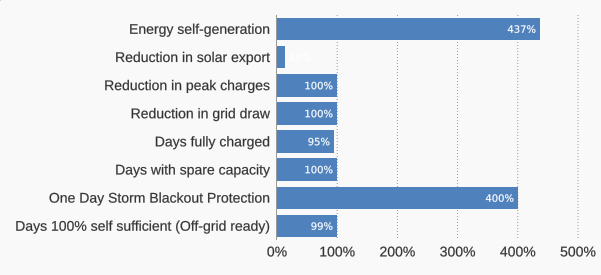
50kWh of battery storage: ~5 days of energy independence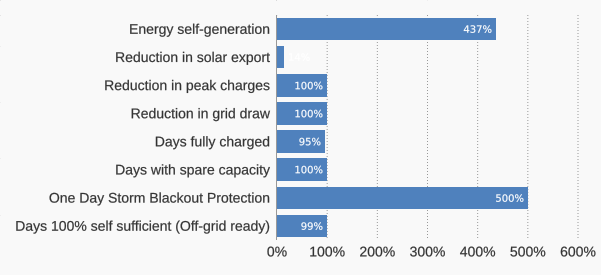
Daily energy balance (10kW storage and 50kWh storage):
The verdict: Off-grid with 10kW of solar? Definitely possible
As you can see, it is clearly feasible for households with low electricity consumption (10kWh per day) to cut ties with the grid with a 10kW solar system and some batteries. In fact, 10kW of solar may actually be overkill in many of these cases when energy consumption is only 10kWh per day – meaning there’s plenty of room for the home to use more energy, either on occasion (e.g. during parties) or regularly (e.g. as the number of people living in the household grows). Even if their average daily electricity consumption rose to 15kWh per day, the solar PV system would still produce enough energy to meet the home’s energy demand.
Of course, one thing we haven’t talked about here is cost. Although a 10kW solar system will typically cost between $10,000 and $15,000, the batteries will be a bit more expensive (indicative prices here). Additionally, there are a number of other things that homeowners thinking about going off grid should take into consideration.
One positive is that you don’t have to go off grid to benefit from solar & batteries. Actually, having a grid-connected solar & storage system might be a better investment, while still affording the owner a large degree of energy independence (and giving you the reliability of having the grid as a ‘backup’ source of energy).
Further resources:
- Solar & battery storage system sizing: A quick guide. (Includes a useful, indicative solar & battery storage system sizing table.)
- Play with the numbers yourself with our Battery Storage Sizing & Payback Estimator tool or our Off-grid Solar & Storage System Sizing Estimator
Compare quotes from up to 7 pre-vetted installers in your area now.
Since 2008 our knowledge and sophisticated software has allowed over 160,000 Australian households make a well-informed choice on their solar & battery installer.
© 2019 Solar Choice Pty Ltd
- Off grid power systems: can you go off the grid with a 10kW solar system plus battery storage? - 9 September, 2019
- A Virtual Power Plant case study: Vermont USA - 5 June, 2019
- New LONGi 430W panel unveiled in Australia - 27 May, 2019
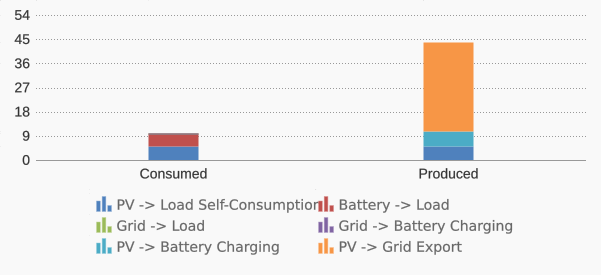
I cannot see any mention of maximum demand in the above.
3 main factors governing the basics for off grid design responces are A). Load profile, B). Available renuwable resource, C).Maximum demand.
It might be pertinent to mention that for a home to go “off grid”, maximum demand – the maximum amount of energy required at any one time has a significant impact on the overall budget required to design an effective responce.
The inclusion of appliances like induction hot plate hobs, electric hot water systems, centralised climate control, underfloor heating, swimming pools,even electric dryers, toasters, kettles, dishwashers, hair dryers, heated towel rails etc can combine to create a maximum demand scenario that can add 30% or more to overal system costs. No joke if your looking at $30k estimates.
Ie conservatively -7kW solar PV AC coupled @ $7k, 3kW solar PV DC coupled @ $3k, 15kWhr of useable storage @ $10k & installation costs including BOS @ $4k, Inverter charger $3k or – max demand excsesive responce $10k.
If the prime motivator for “going off grid” is fiscal, its not practicable unless there is no LV grid available.
Its worth considering the benefits staying on grid andn sharing a network generator as a back up resource the cost of which is amortised over thousands of consumers.
One of the benefits is maximum demand capabilty which is more than sufficient to cover electric luxuries. Another is benefiting from a feed in tarrif or peer share arrangement.
In summer your off grid system having been designed to cator for winter months, will be wasting large amounts of unused solar PV energy, which could be assisting in capitol cost recovery.
A 9 kW PV Array (2P x 15S x 300W) DC coupled (with reverse current protection and controls) with a (1S or 2P x 2S) 48 kWh VRLA battery bank, can be a very efficient, reliable and enduring standalone solution for a well designed and organised (power consumption circuits, equipment and appliances) home.
For VRLA battery banks in particular, the best system design practice is to preserve the battery bank life through shallow DOD management, and design for permanent system autonomy through higher DC bus voltage and lower current suitable PCE.
Lawrence Coomber
Good starting point, but the devil is in the detail. PV solar produces far less output in winter in southern Australia (shorter days) and less on overcast days of course. Some areas of Australia have cloudy winters, so winter output in kWh can be as low as 30% of system design performance (this is actual monitored performance from one of our sites). That means you need a lot more panels. If this is the case for you and compounded if your demand is higher in winter, then going off grid is not a feasible option.
I have 10 batteries and I want to connect them to a home solar system, each battery is 12V 100A.
How do I connect all 10 batteries that I’m just getting a 24V 500A?
The simple truth in deciding to “Go Off the Grid” is to look at how much energy you use, how you use it and when you use it. Establishing a plan to replace hot water and cooking with gas removes a great deal of pressure on nightly power consumption. This said – the final nail is where you live and your determination to change to make it work!
If you live in Melbourne or Tasmania, then your solution is going to be very different to someone living in Brisbane, Perth or Darwin.
Having gone “Off the Grid” 6 months ago myself in Brisbane on a 5kWh solar system with 6.5kWh battery and use <10kWh per day – it works perfectly.. for Brisbane! what would I change – moving to a 10kWh battery would be good and if you are in the habit of using high energy appliances in the morning (Hair Dryers, Irons), buy a second battery!
Everyone is talking about Grid-Connect with a battery – however remember that the overall life of you battery will be shortened if you are cycling it 2-3+ per day as opposed to once per day if you are Grid Dis-Connected. Power companies want you to remain Grid-Connected as they want you to continue to pay the connection fee and also source cheap energy – however do the numbers. In my case – it is unlikely that I would recover the cost of the connection fee based on the QLD FIT that is generally offered. Moving to 1 minute pricing and selling at peaks may work in the short term – however do your numbers.
In summary – if you use 25+ kwh – run your Air con 24×7 and no-one in your house wants to change how they use power – then Grid Connect your Solar system! Do the numbers
Hey Roger,
Did you have any regulatory issues in Brisbane, going completely off grid? Thanks
Ah! I see your calculator is a “ground hog day” calculator, so the “% days self sufficient” figure is meaningless. The other two you link to have the same problem. You could provide a link to the “Sunulator” from the ATA. It uses a whole year’s worth of half-hourly data.
http://www.ata.org.au/ata-research/sunulator
Hi Dave,
First off, I should note that the graphs generated in this article originate in SunWiz’s PVSell software, which uses a full year worth of data, so the ‘% days self sufficient’ figure should be more or less accurate. (Although as another commentator has pointed out, we should really have examined smaller battery storage system sizes for this article.)
I imagine that the Groundhog comment is aimed at Solar Choice’s own Solar & Battery Storage System Sizing Estimator Tool, which we’ve mentioned in this article. Our calculator is relatively simple, but it’s actually based on two days’ worth of (repeated) data, giving it a slight edge over the sort of ‘Groundhog’s Day’ type calculator that you’ve mentioned.
Basically, we include a first day whose numbers are not incorporated into the calculator’s outputs – that day is used as a sort of test case to determine what the battery state of charge will be at the beginning of the next day. We might improve this going forward, but for now the tool does provide a decent rough, indicative estimate for users.
We’d encourage anyone to use multiple tools and consult multiple installers before making a decision about system size, so happy to also recommend that readers here have a go at the ATA calculator you’ve linked to.
Great article. But why show larger batteries when 30 kWh already gives 99% of days self-sufficient? It would be more interesting to see what 20 kWh and 10 kWh batteries achieve.
Hi Dave,
Good point here also – we may re-examine and refresh this article at a later date.